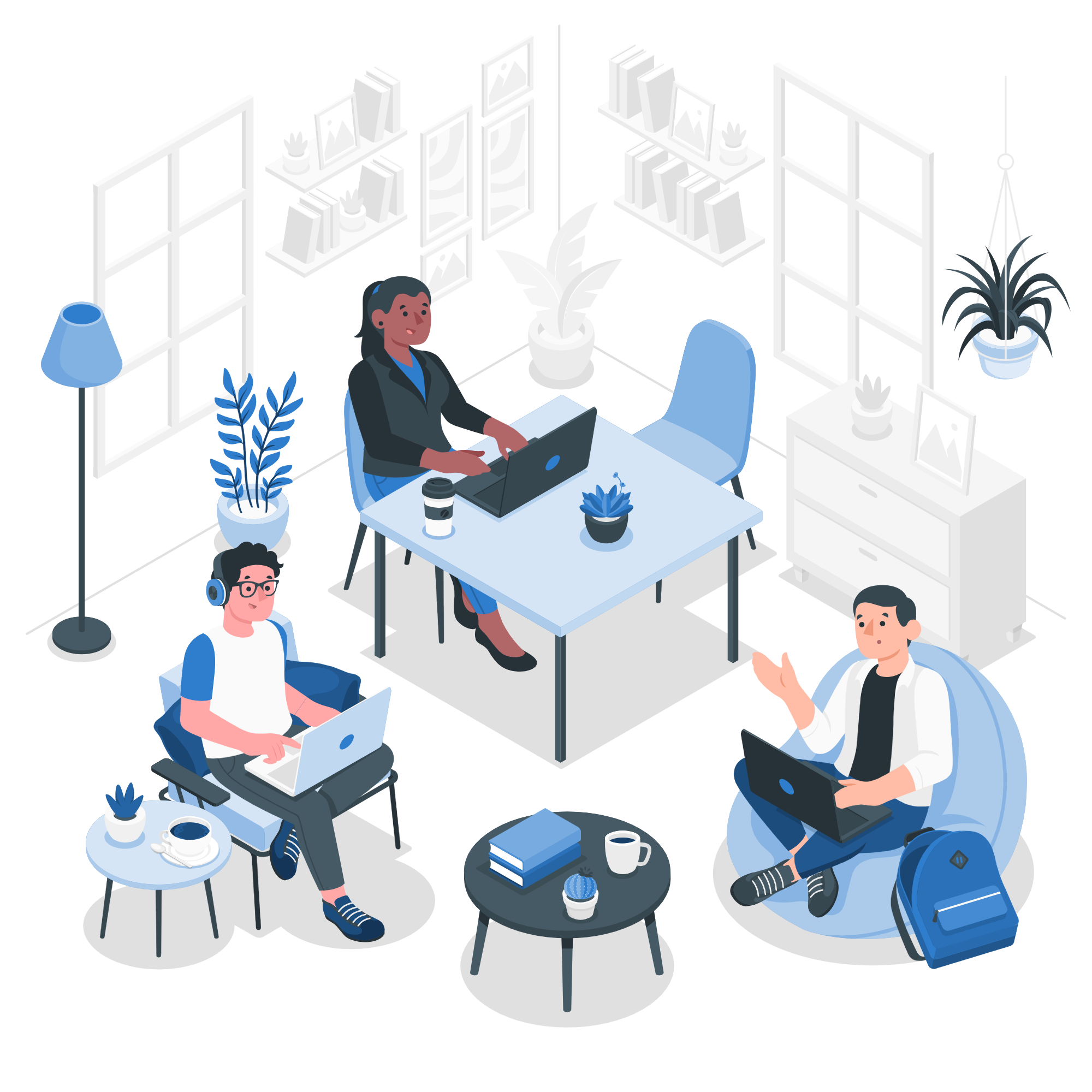Generational labels—Boomer, Gen X, Millennial, and Gen Z—are a familiar shorthand used to describe a roughly 20-year cohort. Generational differences may help explain individual mindsets, but overreliance limits your ability to build high performing, connected teams. Below we share common areas where intergenerational friction bubbles up and our tips for managing multi-generational teams.
Communication
Communication affects everything and everyone. Effective communication creates trust. Teams today use a variety of tools to share information, manage meetings, connect, and collaborate. This complexity coupled with generational differences in communication styles can lead teams to misconstrue their colleagues’ intent, professionalism, and abilities.
You have most likely seen differences in how people across generations:
- Translate the subtext behind email, Slack, and chat messages.
- Use language, punctuation, and emojis.
- Adopt formal or informal communication and presentation styles.
Instead of assuming the period at the end of a sentence is negative or someone’s emoji use is silly, ask and clarify the meaning. Recalibrate and unify everyone’s expectations by discussing and agreeing upon norms for different modes of communication. For example, external emails should convey professionalism while internal team Slack chats can be more casual. Creating this understanding makes for more effective communication which enables teams to build trust.
Employee engagement and wellbeing
Align differing generational expectations related to flexibility, boundaries, and wellbeing..
A Boomer employee shouldn’t get upset when their Gen Z co-worker mutes Slack messages after 5pm. The team should understand when their Millennial co-worker logs off at 3pm to grab their kids from school or when their Gen X co-worker’s morning is blocked for an aging parent’s health appointment. Everyone needs to unplug from work and manage their life outside work to sustain long-term productivity. A tip to manage multi-general team differences? Discuss expectations, respect differences, and establish team norms and shared values. This allows team members rely on and connect with each other.
Operations
Operational policies and procedures set the guardrails. Don’t assume younger staff “know” how to use a tool because of their age. It’s important to train all staff and pay attention to those who might need additional training. Conduct an audit to find out who feels under-equipped with tools, technology, training, or their home office setup. Find out what they have, what they’re missing, and what would make going between their home and office workspaces easier.
Reinforce and hold each other accountable to use the same tools for the same purposes, e.g. everyone receives project updates via Asana rather than one off emails. Reflect the culture you want to foster while meeting the team’s needs.
Culture
Use the culture you are striving for as a bonding element to bridge generational differences. Determine what values are shared across the organization. Understand what it means to different groups and why. It might be flexibility. It might be respect.
Respect is critical to foster a safe, secure, positive workplace. Generations have different perceptions on how respect is shown and earned. Generally speaking, Boomers believe in earning respect by keeping your head down, doing what you’re told, and getting the work done. Millennials are driven to earn respect by demonstrating commitment and showcasing their abilities through initiative. While different generations may take divergent paths to reach the same result, the importance is the shared value and understanding how we may internalize differently.
Tips to manage multiple generations
Try out these short- and long-term fixes if you are experiencing multi-generational management challenges.
3 short-term solutions
- Assume positive intent. Differing communication styles can lead to misunderstandings and unfair judgments. Avoid rushing to judgment. Instead, deconstruct behavior. Be curious, learn from each other to understand different perspectives.
- Normalize generational challenges. Openly discuss them. For example, talk about the grammar and language styles used in emails and messages. Discuss the differences in interactions and work styles, such as how different generations feel they show and earn respect.
- Laugh about it. Managing a multi-generational team can be funny. Learn each other’s slang. Lean into the comedic moments to connect.
3 long-term solutions
- Conduct a workplace assessment to understand strengths, risks, and opportunities for your teams and organization.
- Train (and retrain) staff. In a changing workplace landscape, training is never one-and-done.
- Understand and emphasize each individual’s strengths. Although knowledge of generational trends is useful, you don’t want to make assumptions based on stereotypes. We recommend CliftonStrengths to help understand each other’s motivations, thought processes, and behavior. CliftonStrengths can help employees with similar strengths bond across generations.
Managing multiple generations in the workplace is challenging. However, if we assume positive intent, stay curious, and open the lines of communication, we can reap the benefits of the immense strength, experience, and diversity of multi-generational teams.
If you’d like help understanding and improving the dynamics of your multi-generational workplace, contact us to learn more about our Remote Workforce Assessment and view the webinar recording here.

